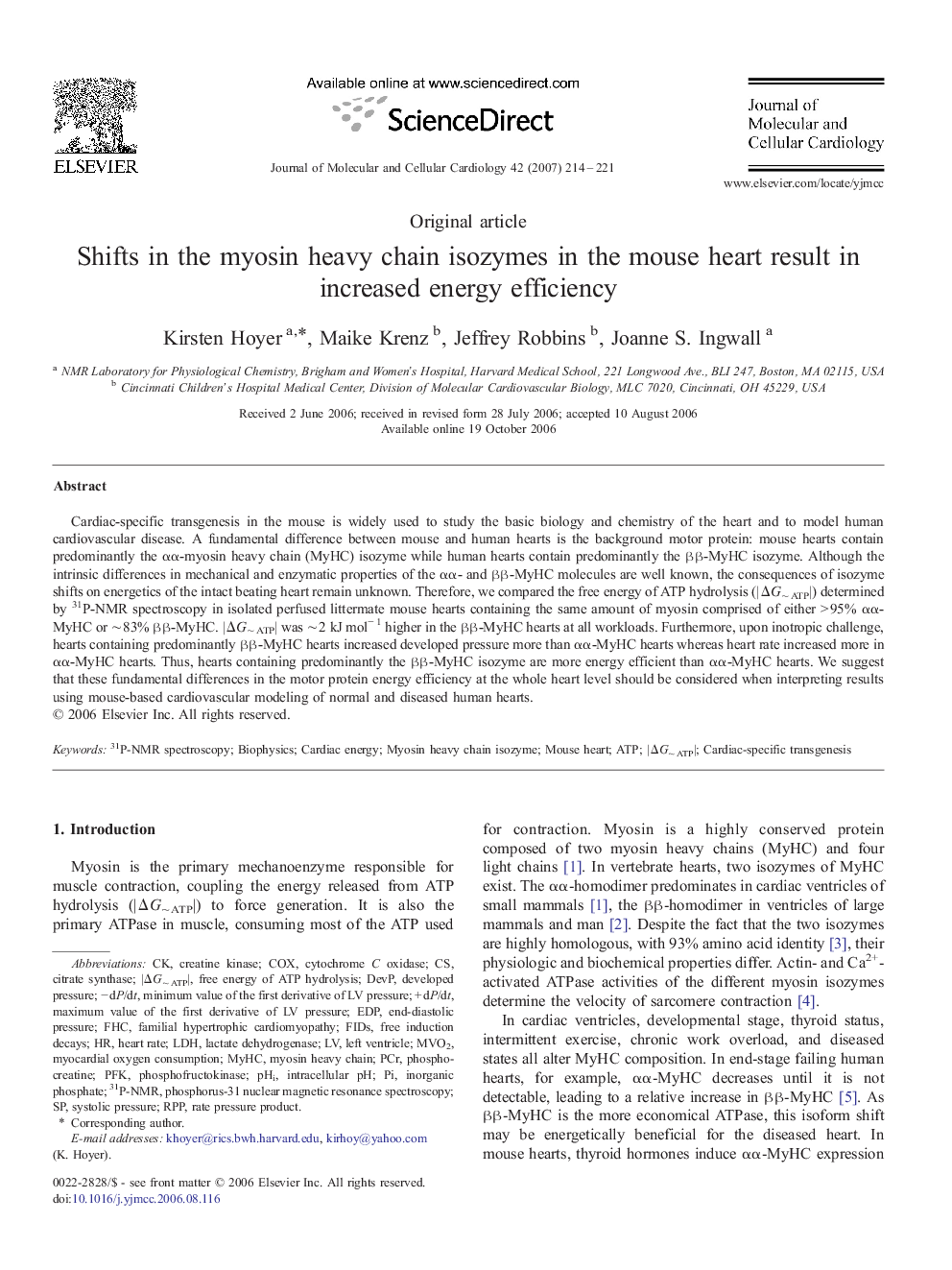| Article ID | Journal | Published Year | Pages | File Type |
|---|---|---|---|---|
| 10954283 | Journal of Molecular and Cellular Cardiology | 2007 | 8 Pages |
Abstract
Cardiac-specific transgenesis in the mouse is widely used to study the basic biology and chemistry of the heart and to model human cardiovascular disease. A fundamental difference between mouse and human hearts is the background motor protein: mouse hearts contain predominantly the αα-myosin heavy chain (MyHC) isozyme while human hearts contain predominantly the ββ-MyHC isozyme. Although the intrinsic differences in mechanical and enzymatic properties of the αα- and ββ-MyHC molecules are well known, the consequences of isozyme shifts on energetics of the intact beating heart remain unknown. Therefore, we compared the free energy of ATP hydrolysis (|ÎGâ¼Â ATP|) determined by 31P-NMR spectroscopy in isolated perfused littermate mouse hearts containing the same amount of myosin comprised of either > 95% αα-MyHC or â¼Â 83% ββ-MyHC. |ÎGâ¼Â ATP| was â¼Â 2 kJ molâ 1 higher in the ββ-MyHC hearts at all workloads. Furthermore, upon inotropic challenge, hearts containing predominantly ββ-MyHC hearts increased developed pressure more than αα-MyHC hearts whereas heart rate increased more in αα-MyHC hearts. Thus, hearts containing predominantly the ββ-MyHC isozyme are more energy efficient than αα-MyHC hearts. We suggest that these fundamental differences in the motor protein energy efficiency at the whole heart level should be considered when interpreting results using mouse-based cardiovascular modeling of normal and diseased human hearts.
Keywords
EDPfree energy of ATP hydrolysis31P-NMRFHCPFKMVO2MyHCrPPFIDsCOXPHIIntracellular pHATPfree induction decaysleft ventricleBiophysicsMyosin heavy chainCitrate synthasecytochrome c oxidaseHeart rate31P-NMR spectroscopyinorganic phosphatePhosphocreatinePhosphofructokinaseend-diastolic pressuredeveloped pressuresystolic pressureMouse heartlactate dehydrogenaseLDHmyocardial oxygen consumptionRate pressure productPCRFamilial hypertrophic cardiomyopathyCreatine kinase
Related Topics
Life Sciences
Biochemistry, Genetics and Molecular Biology
Cell Biology
Authors
Kirsten Hoyer, Maike Krenz, Jeffrey Robbins, Joanne S. Ingwall,
